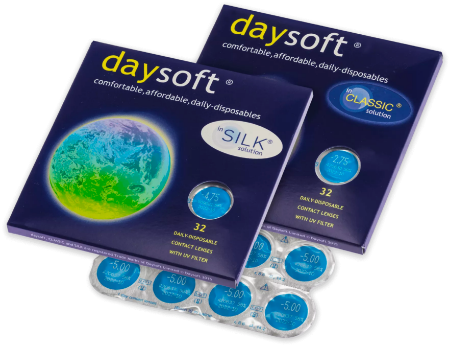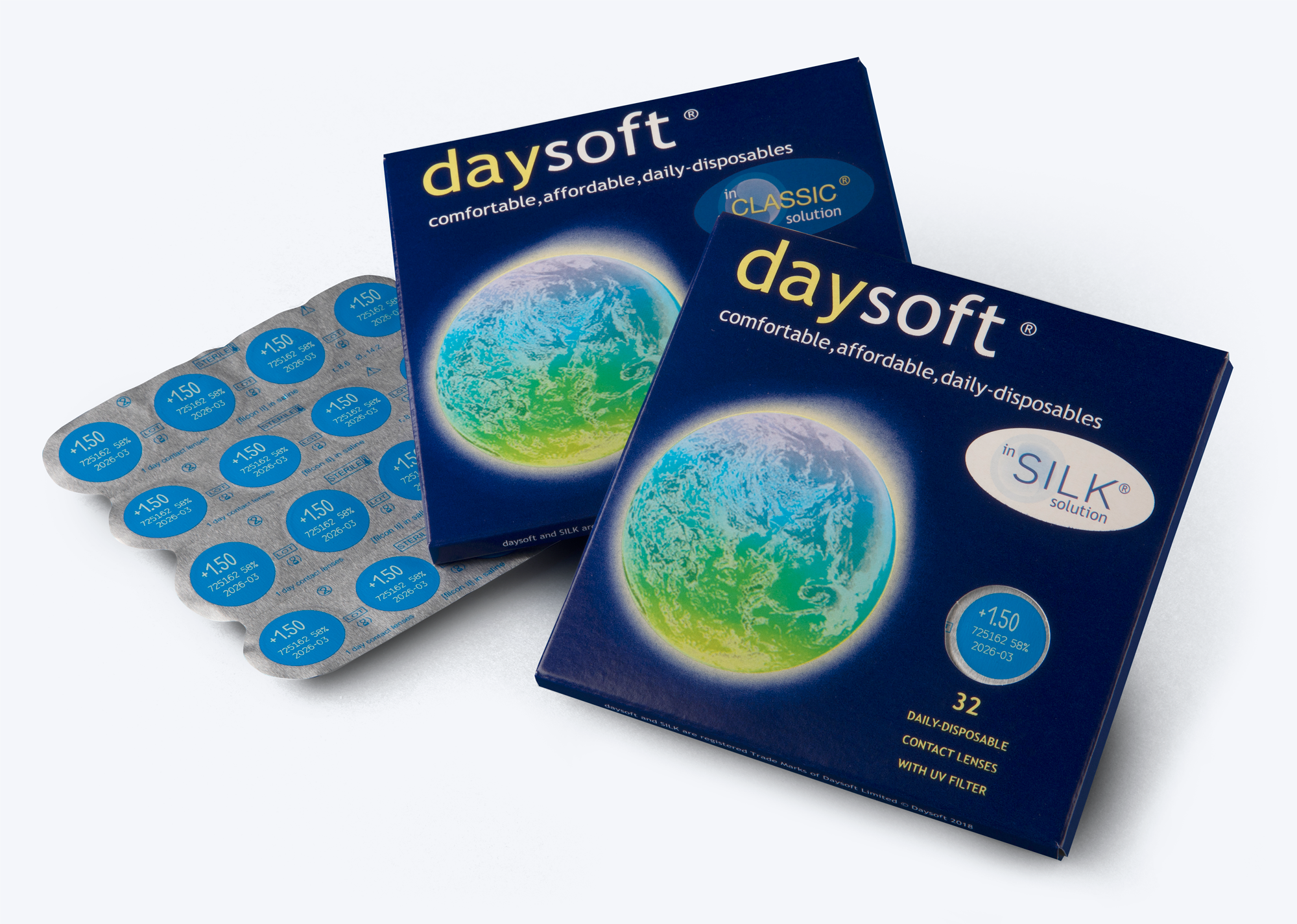Your eyes are constantly evolving – even if your prescription hasn’t changed in years. From long screen sessions in your 20s to the onset of presbyopia in your 40s, knowing what’s typical (and what’s not) helps you stay on top of your eye health.
In this guide, we’ll walk you through the changes in the eye that most people experience in their 20s, 30s and 40s – even if you think your vision’s “fine”. Your eyes will thank you later.

In your 20s: digital strain, subtle shifts and eye-smart habits
Your 20s are typically a decade of peak visual performance – but also the decade when bad habits can start to creep in. Long hours in front of screens, poor diet and forgotten eye exams all contribute to subtle but significant changes in your vision.
Now’s the time to lay the foundation for lifelong eye health, with a mix of smart nutrition, regular exercise and screen-time sanity.
Key changes in the eye
Although your eyesight may feel stable, your 20s can bring subtle shifts.
-
Nearsightedness (myopia). Often diagnosed during the teenage years, this typically stabilises by the early 20s. “Eyesight typically reaches an adult level of vision in a person’s late teens when the eyes are fully developed and the focusing system is most efficient,” says Daniel Hardiman-McCartney MBE, clinical adviser at the College of Optometrists.
-
Digital eye strain, dryness and poor blinking habits. These are common in this age group and can cause real discomfort. Even if your prescription isn’t changing, symptoms like tired, dry or irritated eyes are signs your visual system is under pressure.
What to watch for
-
Eyes that feel dry or gritty by the end of the day
-
Mild headaches after screen time or reading
-
Squinting to see clearly at a distance
-
Increased sensitivity to light
-
Trouble focusing when switching between near and far tasks
In your 30s: fatigue, signs of dry eyes and prescription drift
Your 30s often bring a new layer of responsibility – longer work hours, more screen time and often less sleep. Add in the demands of parenting or high-pressure careers, and it’s no surprise your eyes may begin to show signs of strain.
While your prescription is likely to be stable by now, many people start to experience subtle but noticeable changes in visual comfort and performance.
Key changes in the eye
Although significant vision deterioration is uncommon at this stage, a few key issues can emerge:
-
Digital eye strain. Long hours on screens (especially without adequate breaks) can cause dry eyes, blurry vision and headaches.
-
Dryness and fatigue. Especially common among contact lens wearers, or those working in air-conditioned environments.
-
Prescription drift. Slight changes in corneal curvature or eye shape can make your current lenses feel “off”, even if your prescription hasn’t changed dramatically.
-
Sleep-related eye strain. Poor sleep quality can contribute to eye discomfort and prolonged fatigue during the day.
What to watch for
-
Scratchy or irritated eyes by mid-afternoon
-
Blurred vision that improves after blinking
-
Increased sensitivity to light
-
Needing more light to focus or read clearly
In your 40s: presbyopia, hormonal changes and eye fatigue
Welcome to the age of wisdom – and reading glasses. For most people, the early to mid-40s mark the beginning of presbyopia, the age-related loss of near vision. It’s a perfectly normal shift caused by a gradual stiffening of the eye’s lens, which makes it harder to focus on close-up objects like your phone screen or the small print on a menu.
You might find yourself holding things at arm’s length, turning on your phone flashlight in dim restaurants or dealing with more frequent eye fatigue and headaches, especially after long stretches of screen time. There’s no way to prevent presbyopia, but with a little support and some good habits, you can navigate these changes with clarity and comfort.
Key changes in the eye
While presbyopia may get most of the attention in your 40s, it’s far from the only change affecting your eyes.
-
Hormonal shifts and dry eyes. For women entering perimenopause, hormonal fluctuations – especially declining oestrogen levels – can impact eye comfort. Lower oestrogen can reduce oil production in the meibomian glands, leading to dry, irritated eyes, blurry vision and increased light sensitivity. If your eyes feel gritty or sore more often than they used to, hormones could be partly to blame.
-
The role of oxidative stress. As we age, oxidative stress – the accumulation of damaging free radicals in the body – can harm delicate eye tissues. This natural byproduct of metabolism may raise the risk of longer-term issues such as cataracts and macular degeneration.
-
Systemic health and your eyes. Chronic health conditions that become more common with age – like diabetes, obesity and hypertension – can also affect your eyes. These conditions may compromise blood flow to the retina, increase the risk of vision-threatening complications, or contribute to fluctuating vision and eye strain.
What to watch for
-
Difficulty reading small print
-
Needing more light to focus
-
Frequent eye strain or headaches
-
Scratchy, dry eyes, especially in the afternoon
-
Slight shifts in your existing prescription
Whatever your age, keep an eye on your eyes
Your eyes change throughout your life, and so should the way you care for them. A few smart habits, tailored to your age and lifestyle, can help preserve your vision and prevent discomfort, now and in the years to come.
Nutrition first: eat for your eyes
Just like your skin and brain, your eyes thrive on the right nutrients. Vitamin A is essential for keeping the eyes hydrated and functioning properly, while antioxidants help combat oxidative stress that can age the eyes prematurely. Read about which foods are good for your eyes in this article.
Don’t skip your eye exams
Even if your vision feels fine, regular eye exams can catch early signs of eye strain, dryness or more serious conditions like glaucoma or cataracts. Aim for a comprehensive check-up every two years, or more often if recommended by your optician.
Upgrade your lenses
If you're wearing contact lenses, comfort and clarity should go hand in hand. Consider switching to daily disposable contact lenses designed to lock in moisture and reduce irritation (read about why daysoft are the most comfortable option), especially if you’re noticing dryness or fatigue.
Don’t forget sun protection
The sun doesn’t just affect your skin. UV damage to your eyes builds up over time, increasing your risk of cataracts and other conditions. Choose sunglasses with 100% UVA and UVB protection, and look for wraparound or oversized frames for maximum coverage.
Movement matters: the exercise-eye connection
Staying active doesn’t just benefit your heart and muscles – it also supports healthy eyes. Regular aerobic exercise helps lower your risk of glaucoma, age-related macular degeneration and diabetic retinopathy by improving circulation, reducing pressure in the eyes, and supporting vascular health. Turns out, your eyes enjoy a workout too.
The screen-time trap: digital eye strain is real
With many of us clocking eight-plus hours a day on devices, digital eye strain is increasingly common. Follow the 20-20-20 rule: Every 20 minutes, look 20 feet away for 20 seconds. Discover more tips on how to avoid eye strain.
Eyes change – but comfort doesn’t have to
At daysoft, we believe you shouldn’t have to compromise on comfort or clarity as your eyes change. Our daily disposable contact lenses are designed to support your eye health through every decade.
Explore our lens options today and keep your vision future ready.



